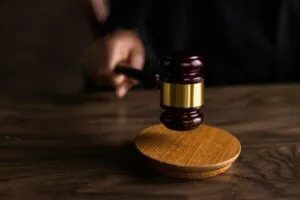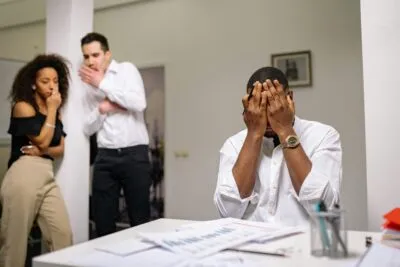
- Originally Published on July 22, 2024
9 Famous Defamation Cases That Shaped the Law and Society
When false statements damage reputations, defamation lawsuits can be a powerful remedy. But some cases end up shaping far more than the lives of those involved. Here are 9 of the most consequential defamation lawsuits everyone should know and what they mean for your own rights.
What Constitutes Defamation? A Legal Primer
Before diving into the cases, it’s important to understand the basic legal elements of a defamation claim. Defamation is a false statement presented as a fact that harms someone’s reputation. It comes in two main forms:
- Libel: A defamatory statement that is written or posted online
- Slander: A defamatory statement that is spoken aloud
To win a defamation lawsuit in the U.S., most plaintiffs must typically prove the following:
- The statement was false
- It was communicated to a third party
- It caused material or reputational harm
- It was made with at least negligence and in some cases, actual malice
Actual malice means the defendant knew the statement was false or recklessly disregarded whether it was true. Thanks to the landmark Sullivan case we’ll discuss shortly, this higher standard applies to public figures suing for defamation. Private figures typically only need to show negligence, meaning the defendant should have known the statement was false.
With these core concepts in mind, let’s explore 9 defamation cases that redefined the boundaries of free speech and the press.
9 Landmark Defamation Cases
1. New York Times Co. v. Sullivan (1964)
In 1960, the New York Times ran a full-page ad criticizing the police response to civil rights protests in Montgomery, Alabama. The ad contained several factual inaccuracies. L.B. Sullivan, a city commissioner, sued the Times for libel even though he was not directly named.
In a landmark 9-0 decision, the Supreme Court ruled that public officials cannot recover damages for defamation without proving “actual malice” – knowledge of falsity or reckless disregard for the truth. This high bar aimed to prevent libel laws from stifling free speech and press scrutiny of the government. Subsequent rulings extended the actual malice standard to all public figures.
The Sullivan case set the stage for today’s press freedoms and fostered a culture of accountability journalism. It’s often considered the most important free speech ruling of the 20th century. But critics argue it made it too hard for public figures to protect their reputations against false and damaging claims.
2. Hustler Magazine v. Falwell (1988)
In 1983, Hustler ran a parody ad mocking religious leader Jerry Falwell as incestuous, drunk and immoral. Falwell sued, claiming emotional distress. A jury awarded him $150,000.
But in 1988, a unanimous Supreme Court overturned the verdict, ruling that the First Amendment protects offensive parodies of public figures that can’t reasonably be taken as factual. Merely being outrageous is not enough to prove actual malice if the content is clearly satirical.
The Falwell case affirmed wide latitude for satirists and comedians to mock public figures without defamation liability. It’s been invoked in more recent lawsuits against Saturday Night Live and South Park. But it also highlighted the difficulty of remedying reputational harm when the content in question blurs facts and farce.
3. Depp v. Heard (2022)
In 2018, actress Amber Heard wrote a Washington Post op-ed identifying herself as a survivor of domestic abuse. She didn’t name her ex-husband Johnny Depp directly. But Depp sued Heard for $50 million, claiming her insinuations cost him acting roles. Heard countersued for $100 million over Depp’s denial of her claims.
The resulting trial captivated the internet as it was live-streamed on YouTube and dissected on TikTok. A jury ultimately awarded Depp $10.4 million in damages and Heard $2 million for one of her counterclaims. However, the trial may be remembered less for its legal outcome than its cultural spectacle.
The case revealed the power and perils of social media for high-stakes litigation in the digital age. Online armies mobilized for each side, hijacking hashtags and harassing witnesses. Experts worry the online frenzy could deter real abuse victims from coming forward. And both stars, to many, emerged more tarnished than vindicated in the eyes of the public.
4. Gibson’s Bakery v. Oberlin College (2019)
In 2016, a Black Oberlin student was accused of shoplifting wine from Gibson’s Bakery in Ohio, sparking student protests of alleged racial profiling. The bakery sued the college and a dean for libel, claiming they supported defamatory flyers calling the shop racist.
A jury awarded the bakery $44 million in damages, which was later reduced to $25 million. The judgment sent shockwaves through higher education as universities grappled with their responsibility for student speech and activism. It also intensified debates over “cancel culture” and whether accusations of racism, even if unfounded, can irreparably harm small businesses.
The case exposed the legal risks colleges face when managing campus controversies that spill into the community. Even if the college didn’t directly produce the defamatory content, its perceived support and resources fueled the damage in the jury’s eyes. Some saw the verdict as a blow to free speech on campus. Others welcomed it as accountability for “woke” overreach.
5. Blurred Lines: Music Copyright Infringement (2015)
In 2013, Marvin Gaye’s family sued Robin Thicke and Pharrell Williams, claiming their hit song “Blurred Lines” infringed the copyright of Gaye’s 1977 song “Got to Give It Up.” A jury awarded the Gaye family $7.3 million, finding that while “Blurred Lines” did not copy the sheet music, it mimicked the overall “feel” and “vibe” of Gaye’s song. This award was later reduced to $5.3 million. In 2016, Williams and Thicke appealed the verdict, but a federal appeals court upheld the ruling in March 2018.
The case sent tremors through the music industry, as artists worried about being sued for songs that merely resembled earlier works in genre or style. Some argued the decision punished artists for drawing inspiration from their predecessors and would chill creativity. Others celebrated it as a victory for music pioneers whose work is often sampled or copied without credit by modern artists.
The “Blurred Lines” case underscored the challenges of deciding infringement in an art form that constantly builds on and borrows from its past. It left many artists wondering where the line is between influence and infringement in a world of remixes, covers, and interpolations.
6. Sarah Palin v. New York Times (2017)
In 2017, the New York Times ran an editorial suggesting a link between an ad by Sarah Palin’s PAC and the mass shooting that wounded Rep. Gabby Giffords. Palin sued for defamation. The Times quickly issued a correction, but Palin pressed on, seeking to prove actual malice.
A jury unanimously rejected Palin’s claim, finding the Times may have been negligent but did not knowingly or recklessly publish false information. But the case still alarmed press freedom advocates. Palin’s lawyers used the suit to probe the Times’ inner workings and demanded access to the email of over 20 reporters, which the judge largely granted. If Palin had prevailed, experts feared it would unleash a flood of politically motivated lawsuits to harass media outlets over honest mistakes.
The Palin case showed how the actual malice standard, while still formidable, may be eroding in an era of hyper-polarization and press distrust. Costly defamation suits, even if unsuccessful, can still inflict financial and reputational damage on news organizations and deter aggressive reporting. The case added urgency to a growing media movement for stronger legal protections against frivolous lawsuits.
7. Shiva Ayyadurai v. TechDirt (2017-2020)
Shiva Ayyadurai, a scientist and entrepreneur, claimed to have invented email as a teenager in the late 1970s. News site TechDirt disputed this, calling Ayyadurai’s claim a “fake story” ginned up to support his run against Sen. Elizabeth Warren. Ayyadurai sued Techdirt for defamation in 2017.
In 2020, an appeals court rejected Ayyadurai’s suit, finding TechDirt’s articles were constitutionally protected opinions and fair comments based on disclosed facts. If successful, the suit could have chilled online news sites from fact-checking controversial claims by public figures.
The case was a major test of press freedoms in the social media era. Ayyadurai was a vocal supporter of Donald Trump, who boosted his email claims on Twitter. In an age of online misinformation, sites like TechDirt are vital in separating digital fact from fiction. However, doing so can come at a heavy legal and financial cost, even if they ultimately prevail under First Amendment protections.
8. Smartmatic v. Fox News (2021-present)
After the 2020 election, Fox News aired segments promoting conspiracy theories that voting machine maker Smartmatic helped rig the outcome against Donald Trump. In 2021, Smartmatic sued Fox for $2.7 billion, claiming it was defamed by baseless accusations of election fraud.
A judge denied Fox’s motion to dismiss the suit in 2022, finding its coverage could be actionable if Smartmatic proved the network promoted known falsehoods. Fox maintains it was just reporting newsworthy claims by the president and his surrogates. However, internal emails and texts revealed in the Dominion lawsuit against Fox suggest that some network stars and executives privately doubted the claims.
The Smartmatic case is one of several ongoing suits by-election companies against conservative media outlets and Trump allies. Fox also faces a $1.6 billion suit by Dominion Voting Systems. Together, they represent a major legal crossroads for how much latitude media companies have to spread unproven accusations of voter fraud. The outcome could redefine the line between legitimate coverage of election disputes and amplifying baseless conspiracy theories.
9. Jones v. Sandy Hook Families (2022-Preset)
In 2012, a gunman killed 20 children and six adults at Sandy Hook Elementary School in Newtown, Connecticut. For years afterward, conspiracy theorist Alex Jones falsely claimed on his Infowars show that the shooting was a hoax and that the grieving parents were “crisis actors.” Several Sandy Hook families sued Jones for defamation.
In a series of rulings in 2022, courts in Texas and Connecticut found Jones liable for defamation and intentional infliction of emotional distress. The Texas court ordered Jones to pay nearly $50 million in damages to one family, while the Connecticut court awarded a staggering $965 million to several other families. The judgments represented a major legal reckoning for Jones after years of spreading malicious falsehoods.
The cases showed that even in an era of widespread misinformation online, there are still legal consequences for defaming private individuals and subjecting them to harassment and threats. They also highlighted the real-world harm caused by conspiracy theories that target the victims of national tragedies.
What Are Your Legal Options If You Are Defamed?
In today’s internet-driven world, online defamation is a growing concern for individuals and businesses alike. False and harmful statements can spread to millions with a few keystrokes, and the damage can be swift and severe. So, what can you do if you’re the victim of online defamation?
- Document the evidence: Screenshot or save the defamatory content before it disappears. Note key details like the URL, publication date, and author.
- Identify the author: Defamatory statements by identifiable authors are much easier to address legally than anonymous posts. If the author is unknown, you may need to file a “John Doe” lawsuit to subpoena online platforms for identifying information.
- Send a cease and desist or retraction letter: Have a defamation attorney send a letter demanding the removal of the false content, a retraction or an apology. Many websites will remove content upon request to avoid legal liability.
- Pursue a defamation lawsuit: If the defamer refuses to remove the content or issue a retraction, you may need to file a defamation lawsuit.
- Consider alternative remedies: In some cases, suing for defamation may draw more attention to the false claims. Other remedies to explore include:
- Online reputation management: Hiring a service to suppress negative search results and flood the zone with positive content.
- Alternate dispute resolution: Proposing mediation or arbitration as a quicker, cheaper, and more private way to resolve the dispute and remove the content.
The internet has democratized free speech but also fueled a rise in online defamation, harassment, and trolling. Navigating this landscape requires a smart legal strategy tailored to the specific facts, players, and jurisdiction of each case. A defamation attorney can help you weigh the costs and benefits of different approaches to achieve your goals and protect your reputation.
The Past, Present, and Future of Defamation Law
From the groundbreaking Sullivan case to the social media-fueled Depp v. Hear trial, landmark defamation lawsuits have always served as a mirror for our society’s values around free speech, reputation, and privacy. As our media landscape evolves, defamation law must adapt to new challenges posed by online anonymity, virality, and the 24/7 news cycle.
Yet the core principles remain constant. False statements that damage reputations have consequences. As an experienced defamation law firm, we’re committed to helping clients navigate this ever-changing landscape to protect their most valuable asset in the digital age: their good name.
If you believe you’ve been the victim of defamation, online or off, contact us for a confidential case evaluation. Together, we can explore your rights and options to achieve the best possible outcome for your unique situation – and perhaps even make a bit of legal history ourselves.
Get Your Free Case Review
Fill out the form below, and our team will review your information to discuss the best options for your situation.
This page has been peer-reviewed, fact-checked, and edited by qualified attorneys to ensure substantive accuracy and coverage.




